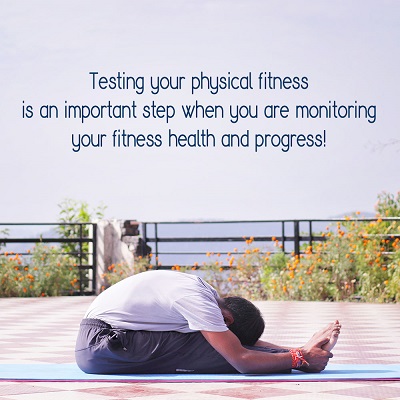 If you are planning to start a new fitness routine, knowing your fitness level can help you get started the right way. You can target the areas that need improving the most if you know where your physical fitness is lacking. It will help you set the right goals, track your progress, and stay motivated.
If you are planning to start a new fitness routine, knowing your fitness level can help you get started the right way. You can target the areas that need improving the most if you know where your physical fitness is lacking. It will help you set the right goals, track your progress, and stay motivated.
Here are some simple steps you can do to get an idea of your fitness level:
Resting Heart Rate
Your resting heart rate refers to the number of your heartbeats per minute (bpm) when you are at rest. It is a good indicator of your aerobic fitness. A lower resting heart rate means you have higher aerobic fitness. It means that your heart can pump more blood with every beat.
You can measure your resting heart rate by your neck or wrist pulse. While looking at your watch, put your middle finger and index finger just below your jawline next to your windpipe, or on your wrist below the thumb. Count your heartbeats within 15 seconds and then multiply them by four. That gives you the number of heartbeats per minute.
It’s often recommended to take your resting heart rate in the morning. Most healthy adults have 60 to 100 bpm, but a good target would be less than 60 bpm. If your heart rate at rest is above 100, that’s abnormally high and usually indicates a low level of aerobic fitness.
Push-Ups
Push-ups test the strength and endurance of your chest, shoulders, and arm muscles. It also challenges your core stability.
It can help you assess your upper-body muscular strength and endurance based on how many you can do over a period of time. If you are a beginner or can’t do the classic push-up, you can perform the modified version on your knees. Do as many as you can until you feel like you need to rest.
When doing push-ups, it is essential to practice good technique. You must ensure that your body is aligned with the spine and that your arms bend to 90 degrees.
Ideally, you should be able to do at least 15 push-ups if you are a woman and 20 push-ups if you are a man. This will indicate your good upper-body fitness level.
Sit-Ups
Another way to measure your muscular strength and endurance is through sit-ups. This time, you’re testing your abdominal and hip-flexor muscles based on how many sit-ups you can do over a period of time.
An average healthy adult should be able to do 35 sit-ups (women) or 45 sit-ups (men). If you can’t do that much, they can serve as your target in your fitness journey.
Running or Jogging Test – This Is Not for Everyone
If you are starting a training plan, and not suffering from an injury or in your senior years, this test is one you will probably want to do.
Running or jogging tests can help you measure your aerobic fitness, as well as monitor your progress. You can also use them to predict your performance in other areas. To do the running test, you need to time how long it takes you to run a 1.5 mile (2.4 kilometers) distance.
Ideally, you should run on a track or a distance with the same ground level, with no hills or interruptions. The average healthy fitness level is 13 minutes for women and 11 minutes for men.
Planking
Core stability is another critical fitness factor to measure. When you have strong core muscles, you won’t get easily fatigued and injured. You have better endurance and posture, allowing you to avoid lower back pain and muscle injuries.
Planking is used to assess core stability. It refers to how long you can hold the plank position. To do this, you lie with your forearms on the floor, your fists facing each other, and your legs lifting your body, while your head, neck, back, and legs form a straight line.
You have very good core strength if you can hold the position for at least two minutes. If you can hold it for more than a minute, you still have a relatively strong core. You need to improve your core strength if you can only do this planking exercise for less than one minute.
Testing your physical fitness is an important step when you are starting a new training program or monitoring your fitness progress. It allows you to set the right goals or recalibrate your training depending on your progress. Keep track of your progress and don’t forget to celebrate your small wins to help keep you to stay motivated.





